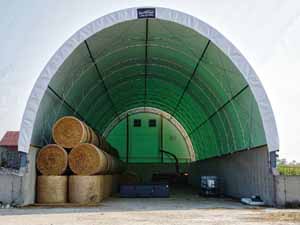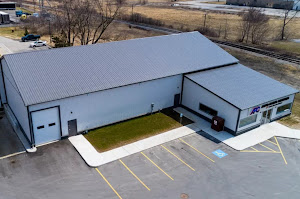Cold plunges have become increasingly trendy in the United States over the past decade, particularly gaining traction in the late 2010s and early 2020s. Several factors have contributed to their rise in popularity, and you may already be aware of some. But how did this refreshing activity begin to gain so much traction?
Well, there have been a number of influencing factors leading towards the popularity of cold plunges that we know today. These include accessibility and innovation that enhances the desire to enjoy cold bathing at home, the influences of celebrity endorsements and social media, plus the history of cold bathing and important modern scientific wellness research.
Given there are so many influences, we are going to take a closer look at each of them in more detail, highlighting the key factors that have made cold bathing such a popular addition to the lives of so many people.
The Desire to Chill and Invigorate at Home
Once considered the domain of sports facilities or gyms and spars, the popularity of jumping into an invigorating cold plunge at home continues to increase, particularly with so many luxurious and convenient options available.
Growing in popularity across North America for home improvement and wellness enthusiasts, the rustic look is ideal for backyards and gardens or patios, beautifully designed by Canadian cold plunge and sauna manufacturer Leisurecraft. Made with durable Western Red Cedar or Eastern White Cedar exteriors, models available include classic rounded barrel designs and rectangular tubs for laying positions.

Another quality brand for home cold plunges is Almost Heaven, and as the name suggests, their focus is on providing the utmost luxury. Combining advanced technology, their barrel design can provide the best of both worlds, used as both a cold plunge and hot tub. Built from options including stainless steel or polycarbonate liners, encased in rustic cedar, this exquisite home addition also comes with digital and WiFi controls.
These are just a couple of leading brands that have become highly renowned in the United States market, where the desire to incorporate cold plunge tubs has experienced phenomenal growth in recent years. This also follows an increased appreciation for health and wellness in our daily lives.
The Influence of Health and Wellness Culture
According to a report published by the Mayo Clinic in 2024, taking a cold plunge after your workout can be beneficial. Ongoing research has produced compelling evidence, finding that cold water immersion helps to reduce the degree of exercise-induced muscle damage, following physically demanding activities.
The acknowledged benefits are many and varied, which is why the phenomenon of cold water treatment is particularly well known and utilized by professional athletes and sports teams, and has been advocated for a long time by fitness experts and physiotherapists. But what are the proven health benefits of cold plunges?
Immersion in icy cold water helps to reduce inflammation and muscle soreness, rapidly constricting blood vessels and decreasing metabolic activity, which also reduces swelling and tissue breakdown. These benefits have proven beneficial in the treatment of arthritis and other inflammatory conditions. In addition, cold plunges can stimulate the production of endorphins, which are the natural painkillers and mood elevators in our bodies.
Regular cold exposure has also been shown enhance the immune system. Some studies have suggested that cold water immersion can increase the production of white blood cells and antioxidants. For all of these reasons, it’s easy to understand why cold plunges have encouraged advocacy from health and fitness practitioners, many of whom recommend including cold water treatments as part of a holistic wellness routine.
Ancient Cold Water Immersion Practices
Such is the widespread use of cold plunges today, we often take them for granted and without knowing their origins, but the practice of bathing in cold water actually dates all the way back to ancient times and throughout history.
The most widely acknowledged cold plunge culture has been observed in Scandinavia, following Nordic bathing traditions. Indeed, cold water immersion was common among the Vikings, who would often bathe in icy rivers and fjords, believing this was beneficial to their health and physical resilience. In Finland, alternating between steamy hot saunas and icy cold plunges has also been practiced for many centuries.

Among the oldest Mediterranean cultures of Europe, cold water treatments were actually part of the health and beauty regimens of elite citizens in ancient Egypt. Likewise, the ancient Greeks were some of the earliest practitioners of hydrotherapy, including cold baths, used as part of athletic training and health routines. And in ancient Rome, the most elaborate bathing houses often featured cold baths known as frigidariums.
In Japan, the practice of Misogi is an ancient Shinto ritual involving cold-water purification, highly regarded as an ideal way to cleans the body and spirit. But fast-forward to the 19th and 20th centuries, the hydrotherapy movement became popular throughout North America, where cold baths were prescribed as part of treatments for a wide variety of ailments, including depression and fatigue.
The Modern Cold Plunge Resurgence
It might be no surprise that in our modern digital era of streaming content and social media, increasingly more people have been exposed to the many benefits of bathing in cold water. One of the most famous advocates of cold plunging is Dutch motivational speaker and extreme athlete Wim Hof, who is also known as “The Iceman” for his activities, including swimming under ice and competing barefoot in marathons held in freezing conditions.
The “Wim Hof Method” of healthy living advocates cold therapy as part of a healthy lifestyle, which also focuses on breathing methods, and making a dedicated commitment to cold exposure to improve overall health and wellness. His approach has gained millions of eager followers and contributed to the modern trend of cold plunges.
Likewise, increased scientific validation from reputable academic and medical research organizations has produced verifiable and proven data, highlighting the benefits of cold plunging in everyday life. This combination of influences has gone on to produce celebrity “influencers” on social media, keen to share their love for ice baths and cold plunges, and their celebrity status has undoubtedly helped to spread the word for cold therapy.
Famed Celebrities Who Enjoy Cold Plunges
Having already mentioned the influence of social media, it’s hardly surprising to find one of the founding fathers of social networks enjoys cold plunges. Before selling the social network to Elon Musk and vastly increasing his own fortune, Twitter founder and former CEO Jack Dorsey was renowned for his healthy lifestyle, which included following his daily sauna bathing routine with an invigorating cold plunge session.
Soccer icon David Beckham is also no stranger to hydrotherapy. During his playing days at Manchester United, Real Madrid, and LA Galaxy, ice baths formed part of the routine for recovery after training and games. But years later, he still enjoys the invigorating sensation of sitting in a cold plunge, sharing an image via Instagram recently that more than a million followers liked.
Already known to be a fan of using her personal cold plunge at home, singer and actress Lady Gaga once took her love of an icy dip to new extremes, participating in the Polar Plunge at Lake Michigan for charity. The musical artist posted her freezing swim on Snapchat, much to the delight and admiration of her millions of fans.
One of the most popular broadcasters and podcasters in the United States today, Joe Rogan frequently speaks about the benefits of ice bathing and his enjoyment of cold plunges, during The Joe Rogan Experience show. Indeed, he has also posted videos on YouTube using a custom-built commercial cold plunge, talking about his personal experiences and the benefits associated with his daily wellness routine.
Quite Literally the Coolest American Trend
Based on how popular ice baths and cold plunges have become in the United States, it’s unlikely this consistently growing trend will show any signs of slowing down. In fact, the cold plunge tub market is currently worth more than $350 billion USD, and expected to reach almost $500 billion by 2031, according to business forecasts. The American cold plunge trend started gaining momentum in 2010, and began to rocket in 2020.
As more people discover the health and wellness benefits of cold bathing, encountering ideal opportunities to buy cold plunges that can easily be installed in their homes, this is a trend that will continue for many years to come. And when famous celebrities are also getting in on the act, sharing experiences to huge audiences, awareness about the pleasures of cold bathing will only continue to increase.
But whether or not you’re influenced by what other people are doing, when searching for the most suitable cold plunge for your own preferences and needs, always do plenty of research and seek medical advice before taking the plunge. This invigorating experience might not be for everyone, although for those who enjoy the icy embrace, investing in the right cold plunge tub is a decision that you’ll never regret.







I have an old one from my grandfathers time.